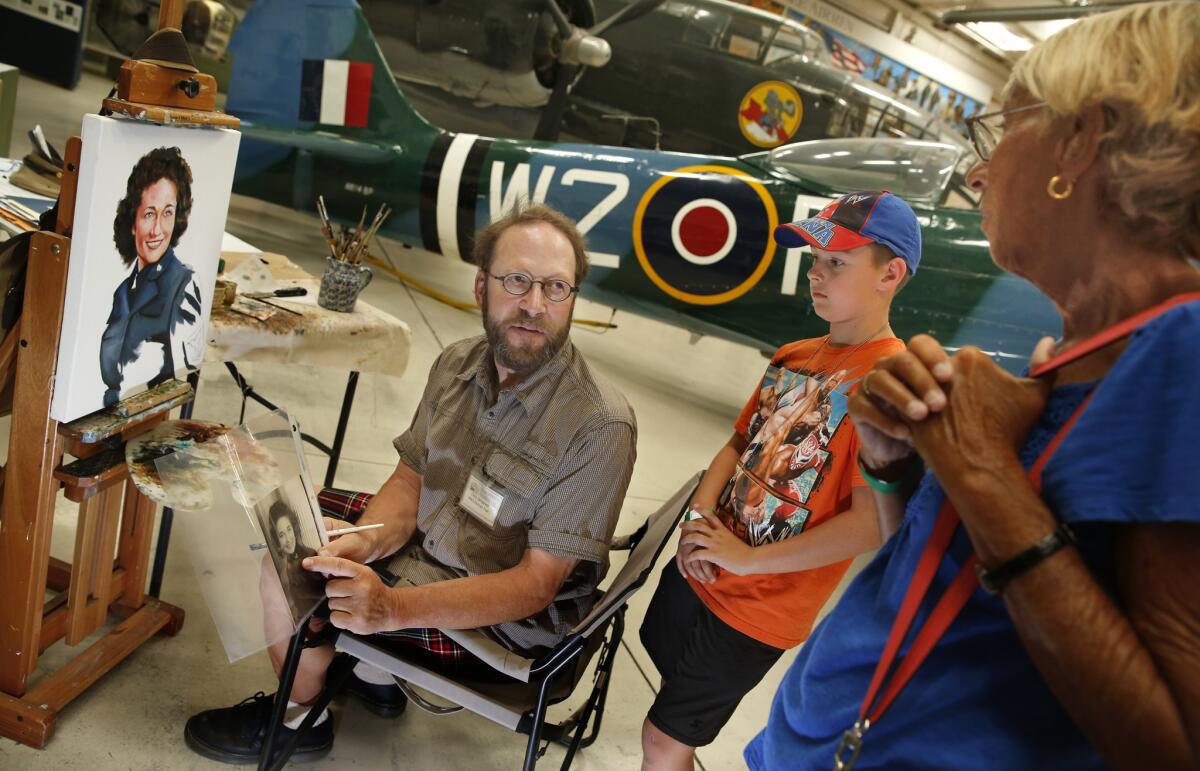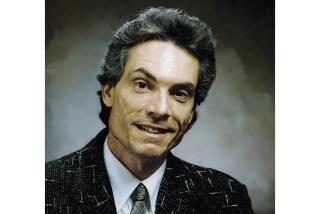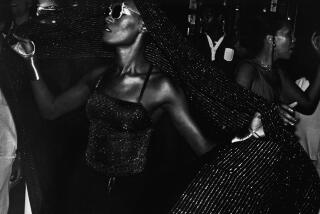Setting Times stories to music: From Radiohead to Frank Sinatra

The soundtrack to Friday’s Great Read is from Frank Sinatra’s wonderful “concept” album, “September of My Years.”
I’m pretty sure I was the only kid in my junior high who had a thing for Sinatra, who wasn’t even a singer of my parents’ generation. Still, they had a stash of his albums, and I would sneak them away and play them on my (personal) turntable. Sure, I loved jazzy albums like “Come Fly With Me” and “Come Swing With Me.” But one of my favorites was the tinged-with-melancholy “September of My Years.”
How did this album, full of wisdom and regret, resonate with a teenager? Many years later, I feel like Sinatra in the album, looking back at his younger self and wishing he could talk to him, give him advice.
Sinatra did the album when he was about to turn 50, and you can hear a lifetime of experience in his voice. It’s not the thing of beauty of his younger years, but I love the deeper tone, the slight rasp that cigarettes and booze have given him. Always a master of timing, he pauses often here, as if to reflect on the life he has lived.
Anyway, in these roundups of the week gone by, I’d like to offer the first paragraphs of each Great Read (or, as they’re known in print, Column One) -- maybe they’ll buy your eye and you can settle in for a good weekend read. And you’ll also get the songs that inspired me while editing the stories, or reading them later if my fellow editor Millie Quan ushered them through. A story soundtrack!
#
Thai Muslim mosque in Azusa is a work of faith
It is near midnight. The Ramadan prayers have just been said, the congregants have paid respect to Allah and headed home. Only the gray-haired imam and his wife remain at the little house of faith they have devoted their lives to.
They walk to their car, looking at the stars, reminiscing about a journey that began 50 years ago and a world away from a low-slung neighborhood up against the Los Angeles foothills.
“This has been quite something, all we have gone through leading us here,” says Rahmat Phyakul. With his wife, Sukatee, at his side, he points proudly to a tall green-and-white sign.
Masjid Al-Fatiha.
On the same sign, another message, this one in the flowing script of their native land. He pauses to translate: First Mosque Established by Thai Muslims in America.
“This place,” he says, “it’s our purpose in life.”
#soundtrack: “True Faith,” by New Order. Any song that starts with “I feel so extraordinary/something’s got a hold on me” is OK in my book.
#
Theater troupe takes on Jewish female stereotypes
Ronda Spinak squeezed more folding chairs into a Brentwood living room, which that afternoon had been transformed, with much shuffling of couches and tables, into a temporary theater.
Moving around the space, she listened for echoes and background noise.
Just past 7:30 p.m., she scurried to the patio and kitchen to shoo 70 theatergoers to their seats. Lights were dimmed. Five actors filed in and perched on stools in front of the brick fireplace.
Two spotlights beamed toward the makeshift stage, and the performers opened their black notebooks.
“I was, after all, a ‘60s girl,” read an actress portraying a spirited Jewish activist. “A ‘60s girl with emphasis on the late ‘60s. Plenty of marching and conviction. Plenty of khaki. Plenty of principles and ideals and outrage.”
She then told the improbable but true tale of how a friend went to absurd matchmaking lengths, fixing her up with a man confronting the imminent amputation of his left arm after a motorcycle accident.
When an actress playing the friend explained her motivation — “Trying to be nice, I guess. How could that hurt?” — the knowing audience cracked up.
In the annals of Jewish female stereotypes, there are the well-meaning but misguided romantic meddler, the guilt-inflicting Jewish mother, the spoiled Jewish American princess and the roly-poly bubbie — the Eastern European grandmother who is happiest in the kitchen.
Seven years ago, Spinak co-founded Jewish Women’s Theatre to challenge these and other widely held views, often negative, of Jewish females by performing their stories in homes, museums and synagogues.
#soundtrack: “Stereotypes,” by Blur. I’ve never loved Blur like some other Britpop bands. But they’re very clever.
#
Syrians flee broken Aleppo as army closes in
Minutes after the barrel bomb eviscerated the crowded market, those still alive had to contend with matters of survival — and collecting what little remained of the dead.
A woman with tired eyes walked away cradling a bottle of water and a few onions like she would a baby. Her black abaya was almost gray from the dust and pulverized concrete. Behind her, her son held a small grocery bag full of the little they had bought before the oil drum filled with TNT killed at least 15 people.
“Oh my God!” a man on a motorcycle said as he stopped near a destroyed fried chicken restaurant.
His shock wasn’t over the human wreckage, but something more pragmatic in a city struggling to feed itself: “The chickens!”
As he spoke, another man walked up behind him, his outstretched arm gingerly holding a bulging black bag.
“Where are the body parts?” he asked.
Several bystanders pointed him to Persian rugs folded over one another to hide their contents. Half a leg and an arm had been collected in a wide-brimmed pan that moments earlier had been used to display freshly harvested vegetables.
Abu Karam, a rebel fighter, was helping to gather the body parts for burial. They had become accustomed to this hurried, bloody task.
“Yeah, yeah, this is Syrian meat,” he said angrily.
It was a rare moment of anger in Aleppo. Anger these days has been overtaken by exhaustion after months of intense air bombardments from emboldened government forces attempting to regain control of the entire city.
Just a few months ago, residents here tried to maintain some level of normality.
Now there is an exodus from a broken city.
#soundtrack: “Give Up the Ghost,” by Radiohead. For years now, Radiohead have been my soundtrack to Raja’s stories out of Syria. Here’s a live version of the song.
#
Your brain is your joystick in neurogaming
Lat Ware pauses to straighten his jacket and organize his chaotic mind. For Ware, who has attention deficit disorder, standing in the halls of a gaming conference as people rush by can feel like being in a hurricane of humanity.
He takes a deep breath before he steps up to a passerby to pose the question he has already asked at least 100 times today.
“Excuse me,” Ware says. “Would you like to throw trucks with your mind?”
The target’s face goes through a range of expressions, trying to formulate the appropriate response to the fantastical offer before settling on an uncertain reply.
“Um, suuuuuure...” says Natalia Veselova, who has come from Russia to attend the Game Developers Conference in March.
Ware, 29, is recruiting people to try to the new video game he has developed. He leads Veselova to a table where he sits her down in front of a laptop next to other players and explains his game, “Throw Trucks With Your Mind.”
He slides a headset onto her that reads brain waves that indicate levels of calm and focus. Players must maximize both states of mind by concentrating on a single thought, which then allows them to pick up and hurl objects at opponents.
“It’s an ultra-violent meditative competitive game,” Ware deadpans.
For several minutes Veselova struggles to block out distractions and relax. Just when she seems ready to give up, pink and blue bars on the screen begin to spike. A swirling beam of light shoots from the hand of her avatar toward a rock in the middle of the screen that wiggles, rises and then goes flying toward an opponent, narrowly missing.
Her eyes go wide, and then a smile spreads across her face. Ware steps back with his own look of satisfaction.
The development of “Throw Trucks” places Ware on a frontier where brain science and video game developers have just begun to cross paths. The emerging field has been dubbed “neurogaming.”
#soundtrack: “If You Could Read My Mind,” by Neil Young. I prefer the fragile, unsure quality of his voice over Gordon Lightfoot’s.
#
Painter takes WWII vets back in time with traveling portrait exhibit
Inside an air-conditioned hangar in the Sonoran Desert, a man in a red and black kilt sat in the shadow of a Supermarine Spitfire and painted.
Midmorning, visitors to the Palm Springs Air Museum shuffled past shined-up war relics, peering into cockpits or getting lost staring across the big, bright box of a room. Distracted by wings or tail fins, they tended not to notice Chris Demarest until they nearly bumped into him and his long table of paint vials, water jugs and solvent cans.
He looked into his canvas, very closely. A small, folded, black-and-white photocopy of a portrait sat next to him. As he glanced over at it, he painted light brown streaks that would form the beginning of a face. He had a steady hand.
Behind him was an entire wall of portraits — young servicemen and women in coveralls or pilot uniforms, leaning against planes, embracing or hard at work.
He painted all 70 of them.
As Demarest talked about his work, a docent stopped to join him. “This — this is really important,” the man said.
For the last two years, Demarest has wound across the country from library to museum to retirement home, displaying his intimate portraits of World War II veterans in their prime, and preparing new works from the people he meets along the way.
Veterans and their families circulate through the big room, stopping to chat. They bring him black-and-white photos, photocopied portraits or plastic scrapbooks to share. These little frozen-frame moments, for many, contain the biggest stories of their lives.
“They all still think of themselves as being 18 or 19 years old,” Demarest said.
#soundtrack: “Last Night When We Were Young,” by Frank Sinatra. Almost anything on the album would have worked. “The Man in the Looking Glass,” perhaps?
#
If you have ideas for story soundtracks of your own, tweet the title and artist to @karihow or @LATgreatreads with the hashtag #soundtrack.
More to Read
Start your day right
Sign up for Essential California for news, features and recommendations from the L.A. Times and beyond in your inbox six days a week.
You may occasionally receive promotional content from the Los Angeles Times.






